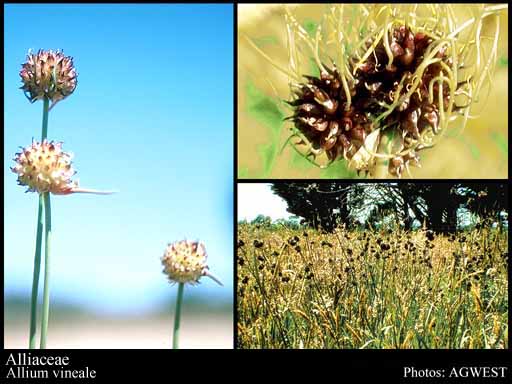- Reference
- Bot.Wörterb. 1:15 (1797)
- Name Status
- Current







Scientific Description
Family Sometimes included in Liliaceae.
Habit and leaf form. Herbs; not evergreen; laticiferous (mucilaginous, e.g. in Allium), or non-laticiferous and without coloured juice; bearing essential oils, or without essential oils. Perennial; plants with a basal concentration of leaves (but sometimes the leaves long-sheathed so as to appear cauline); bulbaceous, or cormous, or rhizomatous (rarely — e.g. Agapanthus). Mesophytic, or xerophytic. Leaves alternate; spiral, or distichous; sessile (usually), or petiolate (rarely, e.g. Allium ursinum); sheathing. Leaf sheaths with free margins. Leaves aromatic (often onion-scented, with allylic sulphides), or without marked odour; simple; epulvinate. Leaf blades entire; flat, or rolled, or solid (or angular); linear, or lanceolate, or ovate (rarely); parallel-veined, or palmately veined, or pinnately veined (then pinnate-parallel); without cross-venules. Stem anatomy. Secondary thickening absent.
Reproductive type, pollination. Fertile flowers hermaphrodite. Unisexual flowers absent. Plants hermaphrodite. Floral nectaries present. Nectar secretion from the gynoecium (from septal nectaries). Entomophilous.
Inflorescence and flower features. Flowers aggregated in ‘inflorescences’ (usually), or solitary (Ipheion); in umbels. The terminal inflorescence unit cymose. Inflorescences scapiflorous; umbellate, usually representing one or more contracted, helicoid cymes; with involucral bracts (the umbel surrounded by (1–)2(to several) bracts); spatheate (with reference to the one to several spathal involucral bracts). Flowers regular (mostly), or somewhat irregular (in Allium). The floral asymmetry when noticeable involving the androecium. Flowers 3 merous; cyclic; pentacyclic. Perigone tube present, or absent. Perianth of ‘tepals’; 6; 2 -whorled (3+3); isomerous; petaloid; similar in the two whorls; white, or violet, or blue, or purple, or yellow. Androecium 6. Androecial members adnate (at the base of the tepals, or to the tube); all equal (usually), or markedly unequal (Ipheion); free of one another (mostly), or coherent (slightly, basally in some Allium species); 2 -whorled (3+3). Androecium exclusively of fertile stamens (usually), or including staminodes. Staminodes when present, 3, or 4. Stamens 6 (usually), or 2–3 (e.g. the Gilliesia group, Leucocoryne); isomerous with the perianth (usually), or reduced in number relative to the adjacent perianth; alterniperianthial, or oppositiperianthial (sometimes even when six-stamened — e.g. see Dahlgren et al. 1985, drawings of Tritagma, p. 197); filantherous (the filaments flat). Filaments appendiculate, or not appendiculate. Anthers dorsifixed; dehiscing via longitudinal slits; introrse. Gynoecium 3 carpelled. The pistil 3 celled. Carpels isomerous with the perianth. Gynoecium syncarpous; synstylovarious, or eu-syncarpous; superior. Ovary plurilocular; 3 locular. Gynoecium stylate. Styles 1; almost ‘gynobasic’, or apical. Stigmas wet type, or dry type; papillate. Placentation axile. Ovules 1–50 per locule (to ‘many’); campylotropous (usually), or anatropous.
Fruit and seed features. Fruit non-fleshy; dehiscent; a capsule. Seeds endospermic. Endosperm oily. Seeds without starch. Cotyledons 1. Embryo achlorophyllous (2/5); straight to curved. Testa encrusted with phytomelan. Seedling. Hypocotyl internode absent. Mesocotyl absent. Seedling collar not conspicuous. Cotyledon hyperphyll elongated, or compact; assimilatory, or non-assimilatory; more or less circular in t.s. Coleoptile absent. Seedling cataphylls present, or absent. First leaf centric, or dorsiventral. Primary root ephemeral.
Physiology, biochemistry. Photosynthetic pathway: C3.
Geography, cytology, number of species. Holarctic, Paleotropical, and Neotropical. World distribution: cosmopolitan, but few in Australasia. 600 species.
Economic uses, etc. Allium spp. supply onions, garlic, leek.